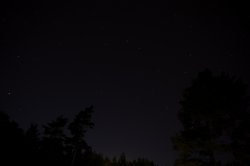Ok, I have been trying to shoot the night sky here and I am coming across a weird problem.
If I shoot at ISO 100 (not the default 200 in Nikon) I get a passable picture with an exposure of 30sec.
If I shoot at ISO 200 (the default) at 30secs I get these weird red and blue pixels, like erratic noise that just pops up.
I have noise reduction on in the camera so what is going on? And how can I get rid of it?
See attached images:
1 with ISO 100 and 2: ISO 200
REason why I am asking, I am about to visit my parents in south america and would like to use my fathers telescope with the D90 but if the results are like that its a waste of time.
It's not the sensor since it disappears with ISO 100
//F
If I shoot at ISO 100 (not the default 200 in Nikon) I get a passable picture with an exposure of 30sec.
If I shoot at ISO 200 (the default) at 30secs I get these weird red and blue pixels, like erratic noise that just pops up.
I have noise reduction on in the camera so what is going on? And how can I get rid of it?
See attached images:
1 with ISO 100 and 2: ISO 200
REason why I am asking, I am about to visit my parents in south america and would like to use my fathers telescope with the D90 but if the results are like that its a waste of time.
It's not the sensor since it disappears with ISO 100
//F



